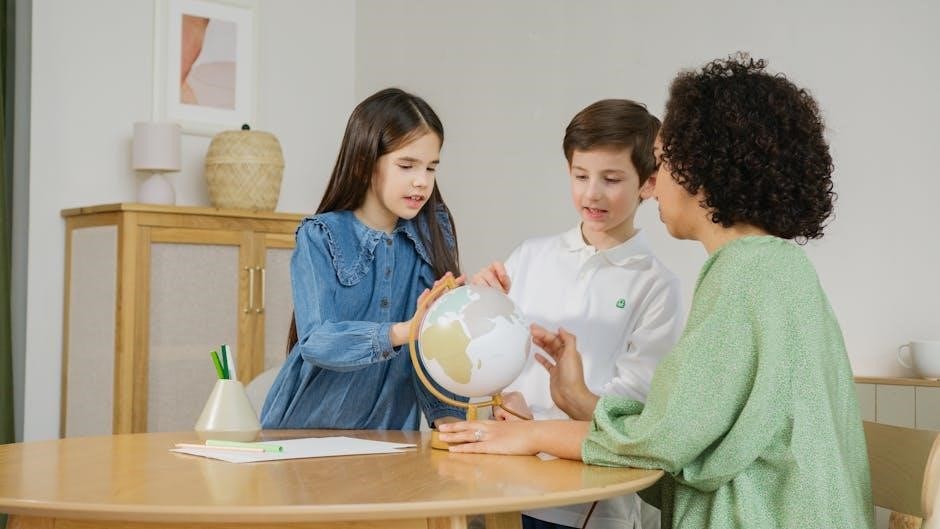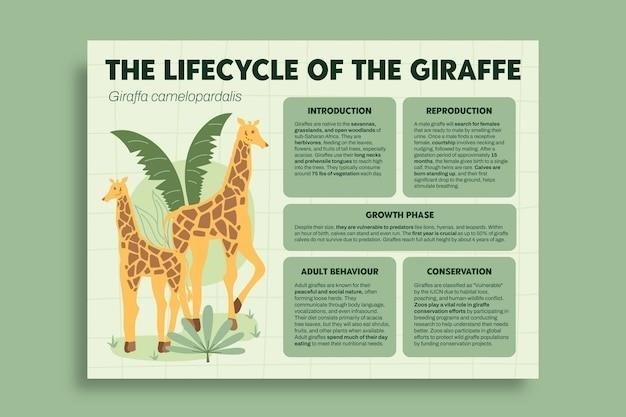The PANRE-LA is a recertification exam for Physician Assistants, offering an open-book format with a 5-second search time․ The AAPA PANRE-LA Reference Guide is a fully searchable resource designed to help PAs answer questions accurately and efficiently, aligning with the NCCPA blueprint․ This guide provides comprehensive, evidence-based content, practical clinical insights, and is updated quarterly to reflect current medical standards, ensuring PAs can master the necessary knowledge effectively․
1․1․ Overview of PANRE-LA
The PANRE-LA (Physician Assistant National Recertifying Examination ⎼ Longitudinal Assessment) is a recertification option for Physician Assistants (PAs), offering a flexible, open-book format․ It replaces the traditional PANRE exam, allowing PAs to demonstrate their knowledge over time through quarterly, low-stakes assessments․ The exam is designed to align with the NCCPA blueprint, focusing on core medical knowledge and clinical skills․ Participants have 5 seconds to search for answers, reflecting real-world clinical practices․ The AAPA PANRE-LA Reference Guide is a key resource, providing evidence-based content and practical insights to aid preparation․ This approach ensures PAs stay current with medical advancements while balancing professional demands․ The exam emphasizes practical application, making it a modern solution for recertification․
1․2․ Exam Format and Structure
The PANRE-LA is a longitudinal assessment taken quarterly over 2-3 years, replacing the traditional PANRE exam․ It features an open-book format, allowing 5 seconds to search for answers, mimicking real-world clinical practices․ The exam consists of multiple-choice questions testing core medical knowledge and clinical application․ Questions are aligned with the NCCPA blueprint, ensuring relevance to current practices․ The exam is pass/fail, with performance profiles provided after each assessment․ This format reduces pressure and allows PAs to demonstrate competency progressively․ The structure promotes ongoing learning and adaptation to medical advancements, ensuring PAs remain proficient without the high-stakes nature of a single exam․ Additionally, the AAPA PANRE-LA Reference Guide supports preparation with its searchable, evidence-based content․

PANRE-LA Exam Content
The PANRE-LA exam covers core medical knowledge and clinical application, focusing on high-yield topics aligned with the NCCPA blueprint․ It includes questions on various medical specialties, patient presentations, and evidence-based guidelines, ensuring a comprehensive assessment of a physician assistant’s competencies and practical skills․
2․1․ Understanding the PANRE Blueprint
The PANRE blueprint outlines the exam content, divided into organ systems and medical conditions․ It emphasizes high-yield topics, such as cardiovascular, respiratory, and gastrointestinal disorders, reflecting common patient presentations․ The blueprint also covers diagnostic and therapeutic procedures, pharmacology, and preventive medicine․ By understanding the blueprint, candidates can focus their study efforts on the most critical areas, ensuring they are well-prepared for the exam․ It serves as a roadmap, guiding candidates through the essential knowledge required to pass, and aligns with the NCCPA’s content specifications for recertification․ Utilizing the blueprint helps in creating an effective study plan, targeting key subject areas and improving overall performance․
2․2․ Key Content Areas to Focus On
Key content areas for the PANRE-LA include organ systems, medical conditions, and clinical procedures․ Cardiovascular, respiratory, and gastrointestinal disorders are high-yield topics, as they are frequently tested․ Pharmacology, including drug mechanisms and side effects, is also critical․ Preventive medicine, such as screenings and vaccinations, should not be overlooked․ Additionally, diagnostic procedures, including imaging and lab interpretations, are essential․ Therapeutic interventions, such as surgical and medical management, are also emphasized․ Understanding these areas aligns with the NCCPA blueprint and ensures a strong foundation for the exam․ Focusing on these topics helps candidates prioritize their studies effectively and boosts their confidence in tackling the exam questions․

Preparation Strategies
Effective preparation involves using comprehensive study guides, managing time wisely, and focusing on high-yield topics․ Utilize recommended resources and prioritize areas aligned with the NCCPA blueprint for success․
3․1․ Recommended Study Guides and Resources
Top-rated study guides for PANRE-LA include the AAPA PANRE-LA Reference Guide, Smarty PANCE, and Mometrix PANRE Secrets․ The AAPA guide is fully searchable, ensuring quick access to answers, while Smarty PANCE offers adaptive practice exams and real-time feedback․ Mometrix provides high-yield content and practice questions․ These resources align with the NCCPA blueprint, covering essential topics like medical knowledge and clinical skills․ Additionally, Blueprint PA offers practice question banks and live courses․ Combining these tools with structured study schedules enhances preparation․ Prioritize guides that include real-world applications, detailed explanations, and updated content to ensure comprehensive understanding and exam readiness․
3․2․ Effective Time Management Techniques
Mastering time management is crucial for PANRE-LA success․ Create a structured study plan, breaking your preparation into manageable chunks․ Prioritize high-yield topics and allocate specific time slots for each content area․ Use a timer during practice sessions to simulate exam conditions and improve focus․ Track your progress weekly and adjust your schedule to address weaknesses․ Incorporate regular breaks to maintain productivity and avoid burnout․ Utilize tools like calendars or apps to stay organized and ensure consistent study habits․ Regularly review and practice questions to reinforce learning․ By staying disciplined and adaptable, you can optimize your study time and achieve a balanced, effective preparation strategy for the PANRE-LA exam․
3․3․ Prioritizing High-Yield Topics
Identifying and focusing on high-yield topics is essential for PANRE-LA success․ The NCCPA blueprint outlines key content areas, with emphasis on high-frequency medical conditions․ Prioritize topics like cardiology, pulmonology, and dermatology, as they are commonly tested․ Review the blueprint to identify weightage of each section and allocate study time accordingly․ Focus on pathophysiology, diagnosis, and treatment, as these are critical for open-book questions․ Use practice exams to gauge your strengths and weaknesses, then concentrate on areas needing improvement; Incorporate evidence-based guidelines and recent updates in your study materials․ By strategically focusing on high-yield areas, you can maximize your study efficiency and improve your chances of excelling on the PANRE-LA exam․

Practical Exam Strategies
Mastering open-book exam techniques and efficient information search strategies are crucial for PANRE-LA success․ Utilize practice tests to refine your approach and optimize time management during the exam․
4․1․ Mastering Open-Book Exam Techniques
Mastering open-book exam techniques is essential for PANRE-LA success․ The AAPA PANRE-LA Reference Guide is a fully searchable resource, enabling quick access to critical information․ To excel, prioritize familiarizing yourself with high-yield topics and efficient search strategies․ Practice identifying key terms and using shortcuts to locate answers rapidly․ Regularly reviewing practice exams helps refine your ability to apply knowledge under timed conditions․ Focus on understanding the NCCPA blueprint to target areas of emphasis․ Additionally, leveraging recommended study guides like the First Line Guide and Smarty PANCE QBank can enhance your preparation․ Time management and strategic searching are vital to maximize your score in this unique exam format․

4․2․ Efficient Information Search Strategies
Efficient information search strategies are crucial for success in the PANRE-LA exam․ Utilize high-quality resources like the AAPA PANRE-LA Reference Guide, which is fully searchable and aligned with the NCCPA blueprint․ Develop a systematic approach to quickly locate answers by skimming headings, keywords, and bullet points․ Prioritize high-yield topics and familiarize yourself with common question formats․ Practice using digital tools to enhance search speed and accuracy․ Incorporate time-saving techniques, such as bookmarking frequently accessed pages or using tags for quick reference․ Regularly test your search efficiency through practice exams to refine your skills․ Mastering these strategies ensures you can navigate the open-book format effectively and maximize your performance during the exam․

Practice Exams and Question Banks
Utilize trusted resources like Smarty PANCE QBank and Blueprint PA for PANRE-LA prep․ These tools offer real-time feedback, adaptive practice, and high-yield questions to refine your exam skills effectively․
5․1․ Utilizing Practice Tests Effectively
Maximizing practice tests is crucial for PANRE-LA success․ Set a timer to simulate exam conditions and focus on weak areas․ Review explanations thoroughly to reinforce learning․ Prioritize question Banks like Smarty PANCE and Blueprint PA, which offer adaptive practice and real-time feedback․ Allocate specific days for full-length tests to build stamina․ Track progress to identify gaps and adjust your study plan accordingly․ Regularly testing yourself helps refine search strategies and time management, ensuring readiness for the open-book format․ Use performance profiles to target high-yield topics and improve scores systematically․ Consistent practice fosters confidence and proficiency, essential for excelling on the PANRE-LA․
5․2․ Recommended Question Banks and Resources
Several question banks and resources are highly recommended for PANRE-LA preparation․ Smarty PANCE QBank offers adaptive practice and real-time feedback, while Blueprint PA provides a comprehensive database of questions aligned with the NCCPA blueprint․ ReelDx and Picmonic are also popular for their engaging formats and high-yield content․ Additionally, the AAPA PANRE-LA Reference Guide is a fully searchable tool designed to help PAs quickly find answers․ Other resources include flashcards, video reviews, and practice exams from CME4LIFE and Mometrix․ These tools are essential for identifying weaknesses, improving search strategies, and building confidence․ Exploring these resources will help you create a well-rounded and effective study plan tailored to your needs․

Study Groups and Peer Support
Joining study groups and engaging with peers enhances learning through shared knowledge and real-world insights․ Online communities like Smarty PANCE forums foster collaboration, while ReelDx and Picmonic offer interactive tools to supplement group study, keeping you motivated and informed․
6․1․ Benefits of Joining Study Groups
Joining study groups provides numerous benefits, including shared knowledge, real-world insights, and collaborative learning․ Peers can clarify doubts, discuss complex topics, and offer diverse perspectives, enhancing understanding․ Study groups also foster accountability, as members motivate each other to stay on track․ Additionally, many resources like Smarty PANCE forums and ReelDx offer interactive tools to support group learning․ These platforms allow PAs to engage in discussions, share study materials, and gain practical tips․ Participating in study groups also helps reduce stress and isolation, creating a supportive environment for exam preparation․ By leveraging collective expertise, PAs can address weaknesses and build confidence effectively, making study groups an invaluable resource for PANRE-LA success․
6․2․ Engaging with Online Communities
Engaging with online communities offers valuable support and resources for PANRE-LA preparation․ Platforms like Smarty PANCE forums, ReelDx, and Picmonic provide interactive tools, shared study materials, and real-time feedback․ These communities allow PAs to connect with peers, discuss challenging topics, and gain insights from experienced professionals․ Online forums also offer access to curated resources, practice questions, and study tips․ Additionally, many communities host live Q&A sessions and webinars, addressing specific exam-related concerns․ By participating in these online groups, PAs can stay updated on the latest exam trends, reduce feelings of isolation, and refine their study strategies․ Such engagement fosters a collaborative learning environment, enhancing overall preparedness for the PANRE-LA․

Common Mistakes to Avoid
Common mistakes include inadequate preparation, poor time management, and neglecting high-yield topics․ Avoid these pitfalls by using evidence-based resources and maintaining a structured study plan․
7․1․ Pitfalls in Exam Preparation
Avoiding common pitfalls in PANRE-LA preparation is crucial for success․ One major mistake is neglecting to align study materials with the NCCPA blueprint, leading to gaps in knowledge․ Additionally, over-reliance on a single resource can limit exposure to diverse question formats and content areas․ Many candidates also underestimate the importance of time management during practice exams, which can result in poor performance under timed conditions․ Furthermore, failing to address weak areas identified through practice tests may leave candidates unprepared for challenging questions․ Lastly, inadequate review of high-yield topics and not utilizing active learning strategies can hinder retention and application of key concepts․ Proactively addressing these issues ensures a more robust preparation strategy․
7․2․ Avoiding Exam Day Errors
Exam day errors can be minimized with strategic approaches․ Prioritize time management by skimming questions first to identify high-confidence answers, allowing efficient use of the 5-second search feature․ Avoid over-reliance on the open-book format by ensuring familiarity with key concepts beforehand․ Stay calm and methodical, as rushing leads to oversight․ Double-check answers to ensure accuracy, especially when searching for information․ Manage stress by taking brief pauses between questions to maintain focus․ Additionally, avoid distractions by creating a quiet, organized workspace․ Leveraging practice exams to refine these techniques can significantly reduce errors, ensuring optimal performance during the PANRE-LA․ Proper preparation and mindset are key to avoiding costly mistakes on exam day․

Work-Life Balance and Stress Management
Maintaining work-life balance and managing stress are crucial during PANRE-LA preparation․ Regular breaks, exercise, and mindfulness practices help reduce stress, ensuring mental clarity and focus for effective studying․
8․1․ Importance of Maintaining Balance
Maintaining work-life balance is essential during PANRE-LA preparation to prevent burnout and sustain mental health․ A balanced routine ensures adequate rest, reducing stress and improving focus․ Prioritizing self-care activities, such as exercise, meditation, and spending time with loved ones, helps recharge energy levels․ Overloading with study material without breaks can lead to mental fatigue, decreasing productivity․ Incorporating hobbies and relaxation techniques fosters a healthy mindset, enabling better retention of information․ Additionally, balancing study time with professional and personal responsibilities ensures long-term well-being․ By managing time effectively and setting realistic goals, PAs can maintain their physical and emotional health while preparing for the exam․ This balance is critical for sustained success and overall quality of life․

8․2․ Effective Stress Management Techniques
Managing stress during PANRE-LA preparation is crucial for maintaining focus and overall well-being․ Techniques such as time management, mindfulness, and physical activity can significantly reduce stress levels․ Prioritize tasks, break study sessions into manageable chunks, and incorporate short breaks to avoid burnout․ Mindfulness practices, like meditation or deep breathing, help calm the mind and improve concentration․ Engaging in regular exercise releases endorphins, which boost mood and energy․ Additionally, connecting with peers or mentors for support can alleviate feelings of isolation․ Setting realistic goals and celebrating small achievements fosters motivation․ Adequate sleep and a balanced diet are also vital for cognitive function and stress resilience․ By implementing these strategies, PAs can maintain emotional stability and approach their studies with clarity and confidence․



